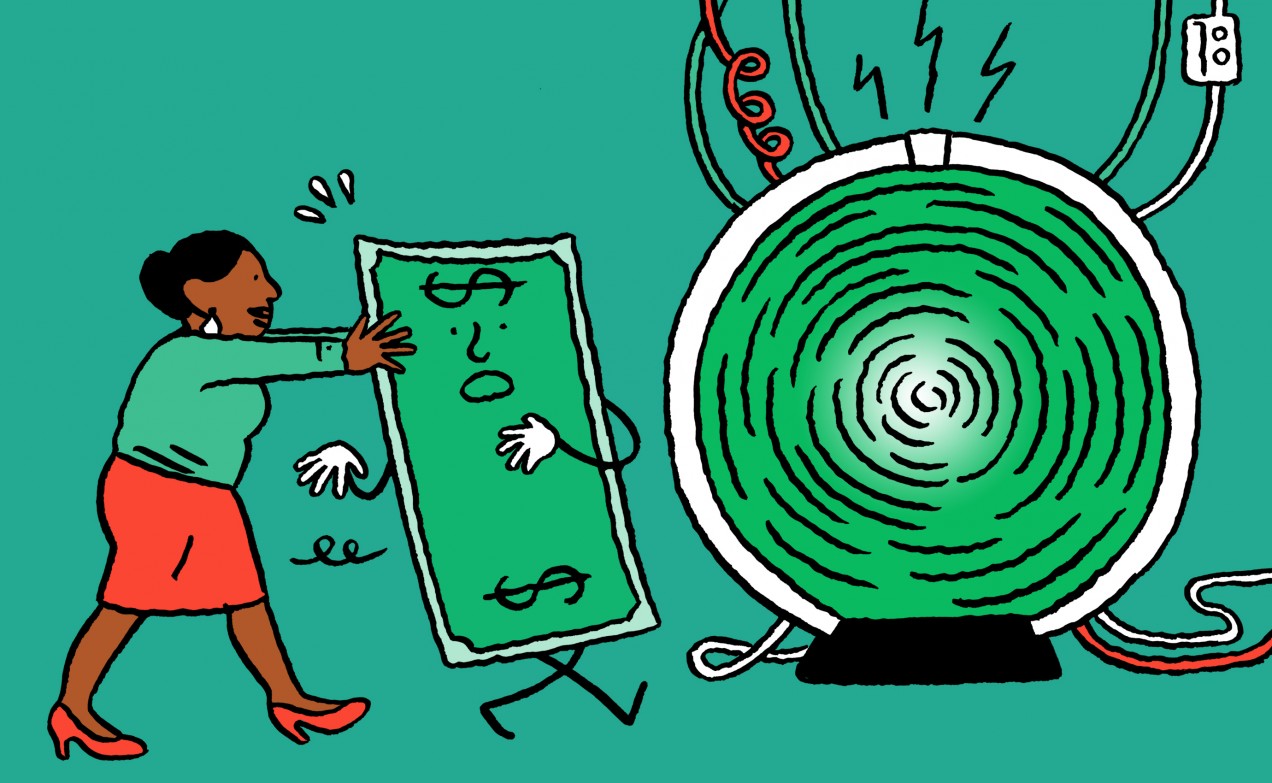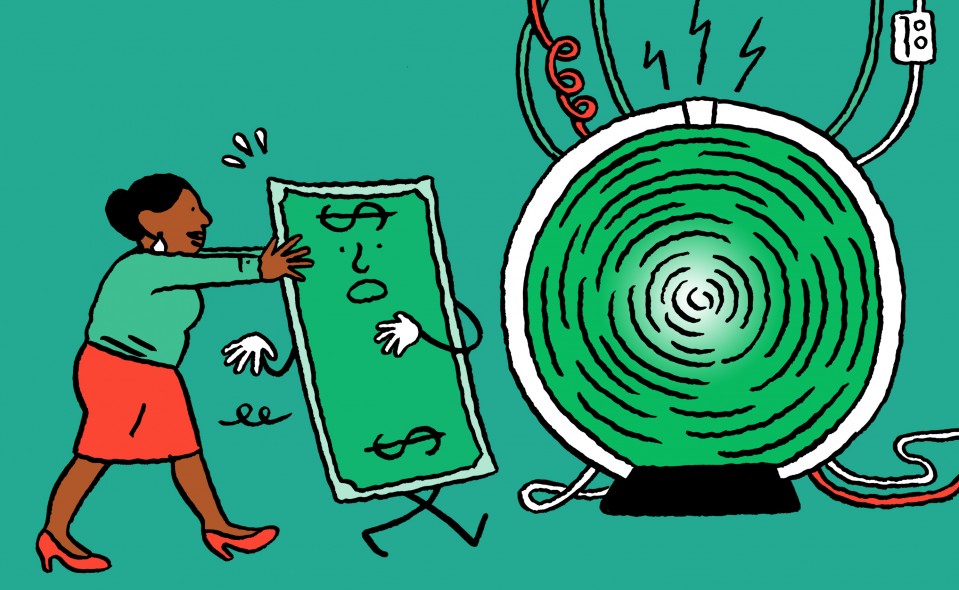

Blockchain / Cryptocurrency
Governments Are Testing Their Own Cryptocurrencies
Bitcoin-like money may emerge in countries where cash is in decline or financial networks need updating.

The people of Sweden are breaking up with cash. The number of banknotes and coins in circulation has fallen to its lowest level in three decades. Riksbank, Sweden’s central bank, estimates that cash transactions made up only 15 percent of all retail transactions last year, down from 40 percent in 2010, thanks in large part to massively popular mobile payment services.
The situation has left Sweden’s central bankers wondering: should the country introduce a purely digital form of government-backed money? And if so, should it use technology similar to that underlying Bitcoin?
Riksbank isn’t the only central bank taking a serious look at blockchain, the technology that makes Bitcoin and other cryptocurrencies run. These systems, also called distributed ledgers, rely on networks of computers, rather than a central authority like a bank, to verify and record transactions on a shared, virtually incorruptible database. Government bankers across the world believe this has the potential to replace cash and make other payment systems more efficient.
Central-bank-backed cryptocurrencies would be ironic indeed, given that Bitcoin was created as a way to circumvent the need for banks. Beyond that, the idea raises complicated questions about how such systems should be designed, built, and maintained, as well as how they could affect a country’s—or the entire planet’s—financial stability. That’s why Riksbank is hedging its bets, investigating not only distributed-ledger technology—which it describes as unproven but “progressing incredibly rapidly”—but also traditional, centralized accounting methods for its “e-krona” (pdf) project.
Some economists have argued (pdf) in recent years that a cryptocurrency tied to central-bank-backed money could give governments a way to issue digital tokens that are a lot like cash. Users of such a “FedCoin” would enjoy the level of anonymity that Bitcoin provides, goes the theory, while being protected against the volatility that has plagued cryptocurrencies. Many countries’ central banks are investigating this idea, but Sweden looks to be the furthest along.
But a cryptocurrency that’s available to all consumers “opens up a whole host of issues” and would pose new challenges for makers of monetary policy, says Rod Garratt, an economics professor at the University of California, Santa Barbara.
First, there’s the question of who, exactly, should verify the transactions and maintain the distributed ledger. Even if that’s solved, the new system would be, in a sense, too streamlined, making it easier for bank runs to occur in a moment of crisis or panic. In most current financial systems, large-scale withdrawals of funds are naturally slowed by the time it takes for a central bank to produce the paper money people are demanding. But if the currency is purely digital, no such brakes exist—a panicked citizenry could empty their accounts almost instantly, leaving an entire country’s banking system all but penniless.
A new journal article (pdf) published by the Bank of International Settlements, a kind of central bank for central banks, suggests a more straightforward approach than trying to use cryptocurrency to replace cash. In the article, Garratt and Morten Bech, a researcher at the BIS, draw an important distinction between a “retail” cryptocurrency like FedCoin and a “wholesale” one that would only be used by banks.
One important role central banks play in the global financial system is to facilitate large payments between commercial banks. Commercial banks make deposits at central banks, and when they need to send a large payment to another bank, as they might during the sale of a company or house, they can rely on a central-bank-operated payment system. The central bank handles the “clearing,” or the updating of each party’s account to reflect the new transaction, and the “settlement,” or the literal transfer of the money.
Many central banks’ wholesale payment systems are facing a problem: they’re based on obsolete programming languages and outdated database designs, and governments are looking for ways to modernize them. The central banks of Canada and Singapore both recently demonstrated prototype distributed-ledger-based wholesale payment systems that handle clearing and settling simultaneously, via a cryptocurrency token. China is also performing similar tests (see “China’s Central Bank Has Begun Cautiously Testing a Digital Currency”).
Since such a system would be restricted to banks, it would not have the same impact on monetary policy as a consumer-facing one, says Garratt: “You are just replacing the current back-office financial-market infrastructure.” Despite proofs of concept, however, the technology is still immature, and the current round of modernization efforts is unlikely to end up using distributed ledgers.
Even if this application were ready for prime time, it wouldn’t solve the issue that Sweden is facing. One obvious drawback to the country’s dwindling cash usage is that an increasing reliance on mobile payment systems risks marginalizing people who don’t use them or can’t access them. Those systems are also run by private companies, which means that commercial forces, rather than government policies, could end up determining how effectively the financial system serves people and the economy.
Ultimately, whether Sweden and other governments decide to take the cryptocurrency plunge could hinge on whether people actually want it, says Garratt: “Will the public demand a digital medium of exchange with properties similar to cash? In places where it does, maybe there will be pressure for governments to provide it, and in places where it doesn’t, there won’t be.” Either way, it’s going to take a while to arrive.